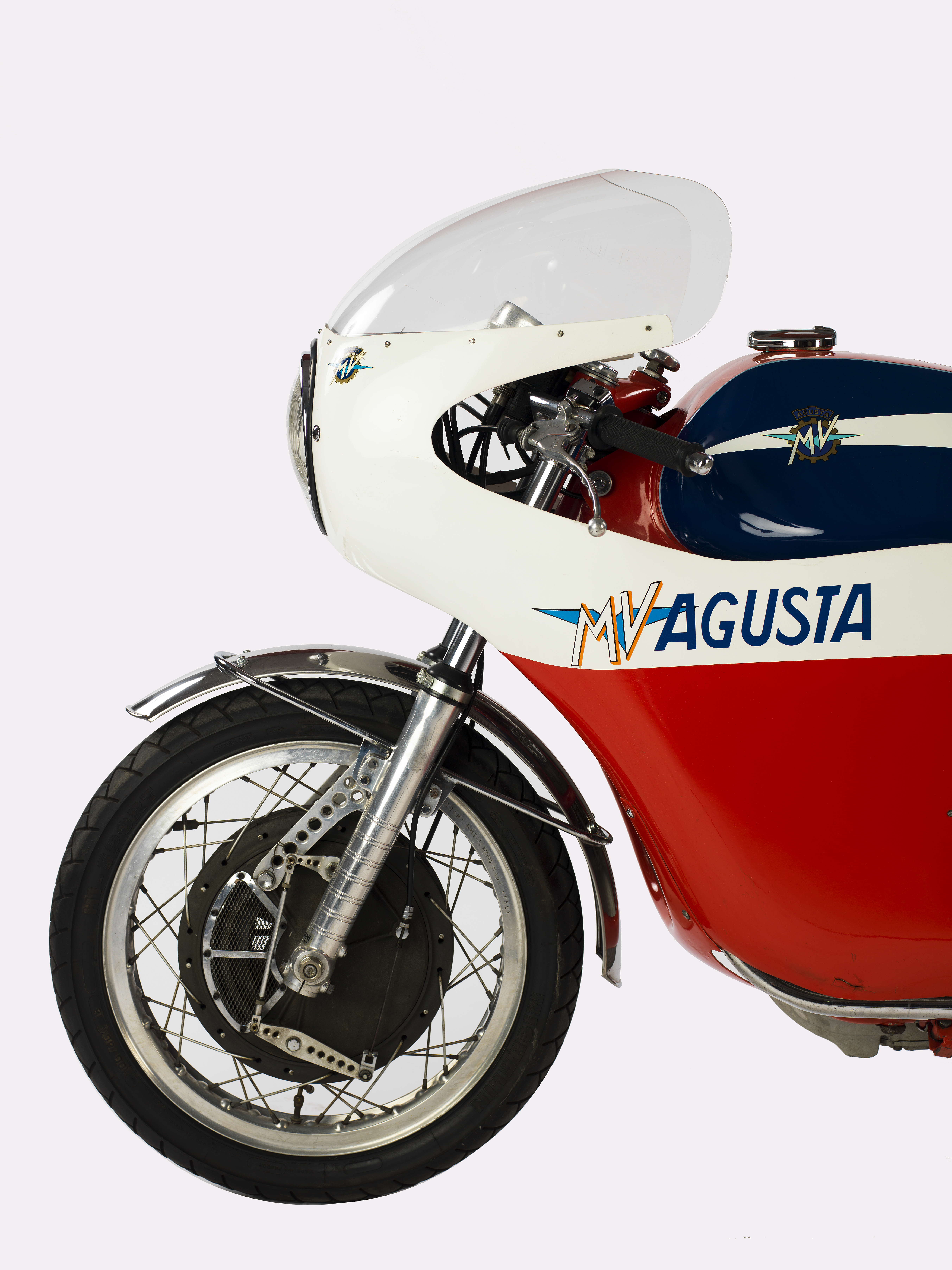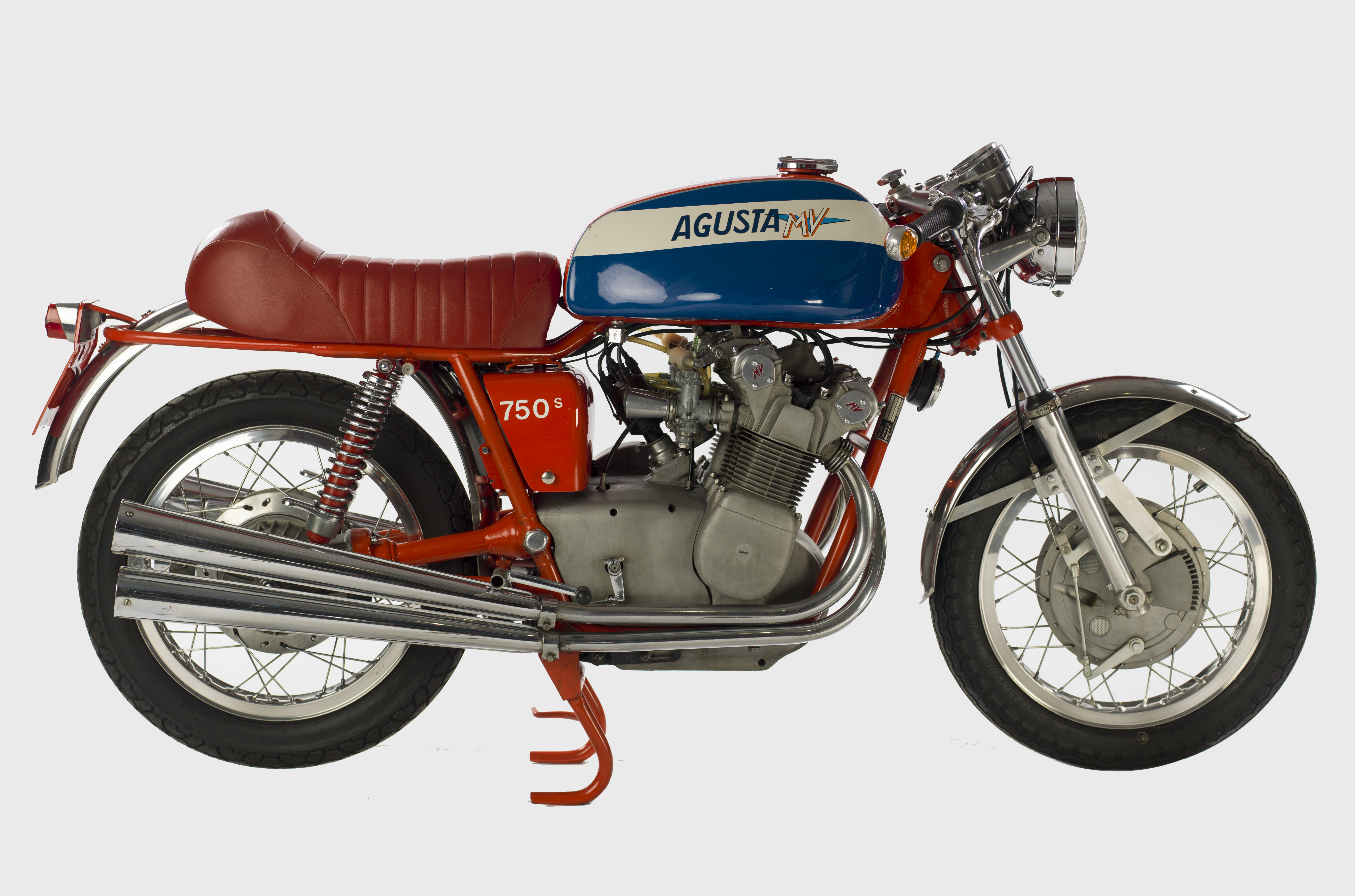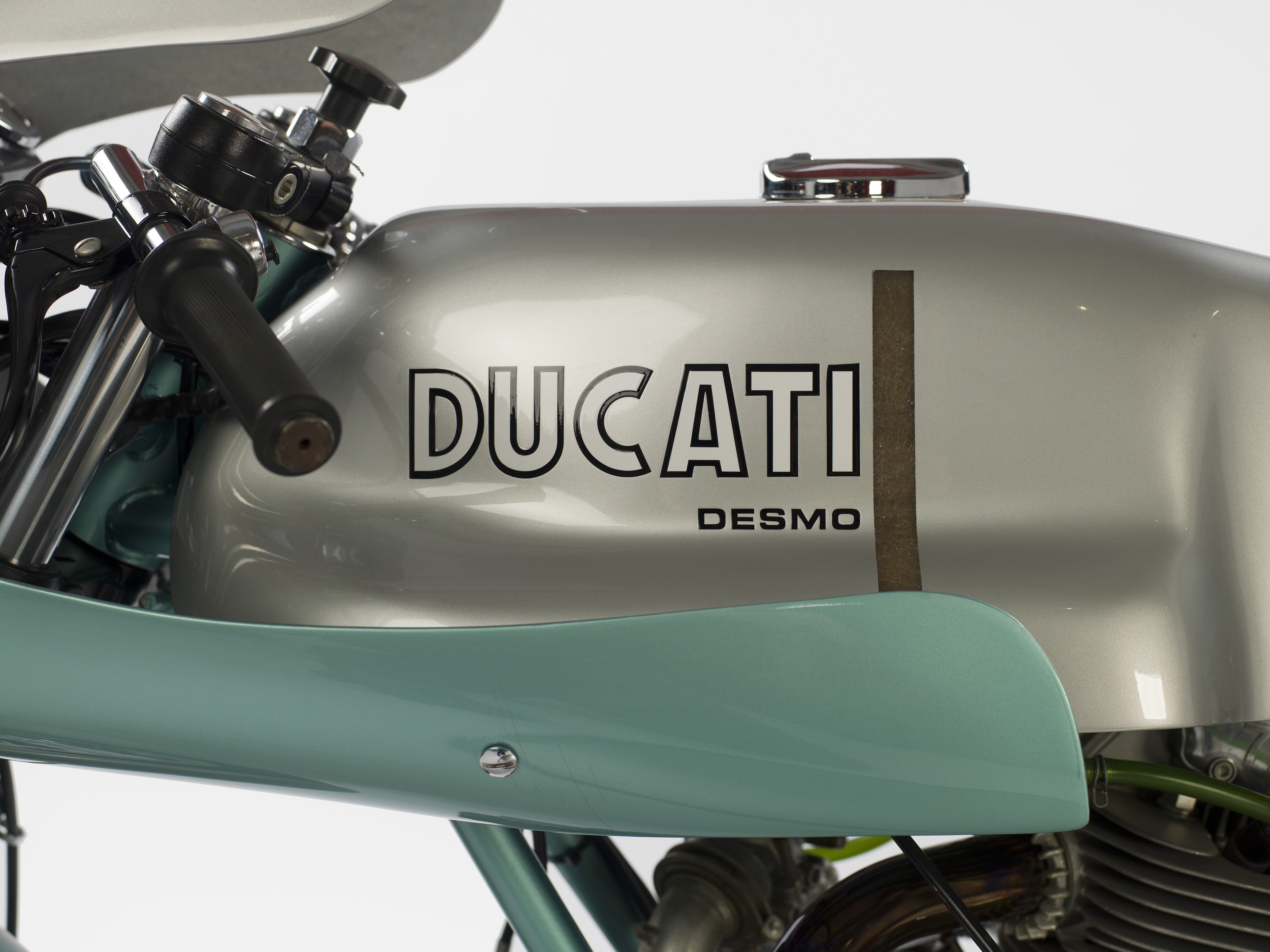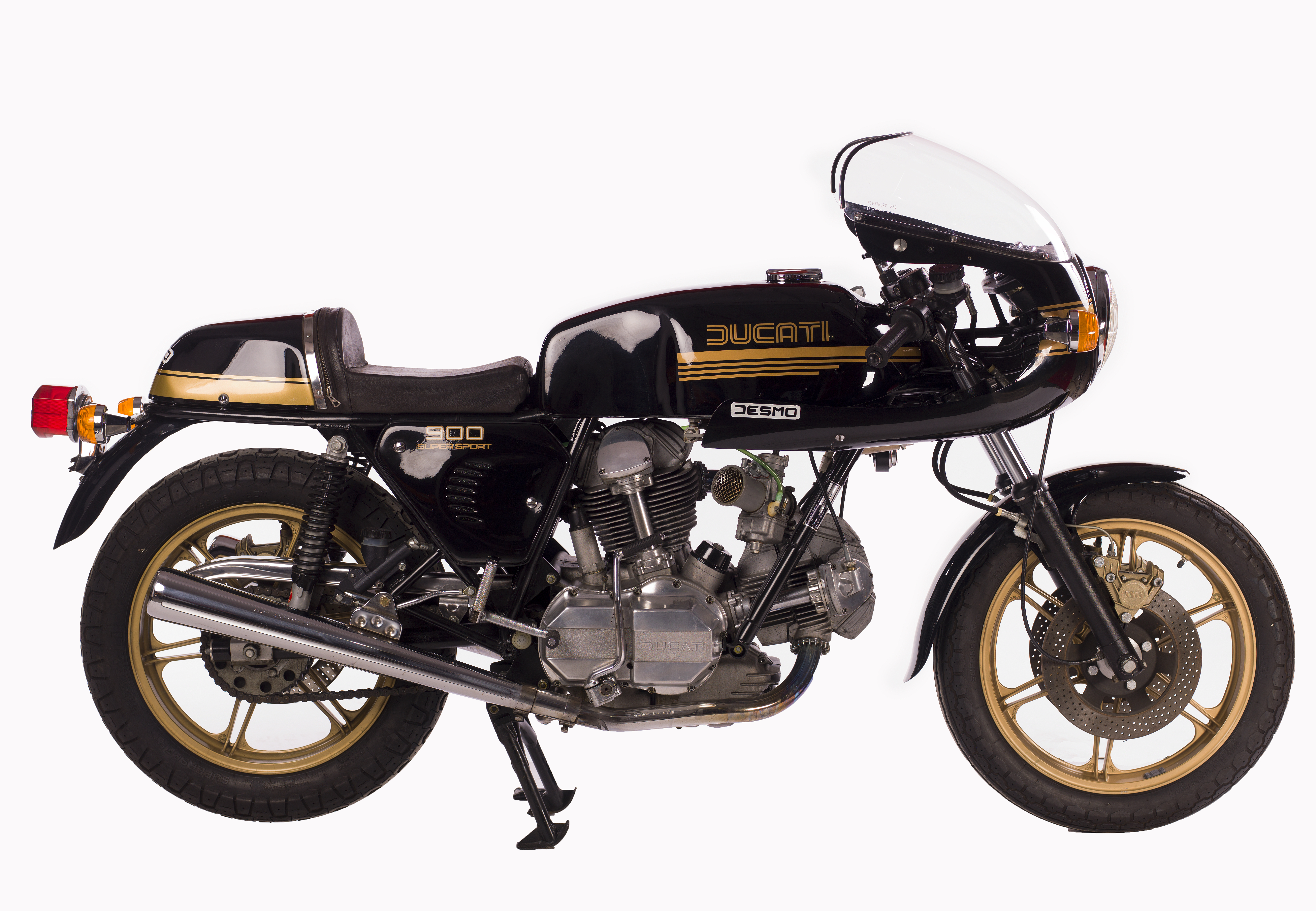 1971 MV Agusta 750 S, Courtesy Stuart Parr Studio
1971 MV Agusta 750 S, Courtesy Stuart Parr Studio
Miami Design District
February 16 – April 22, 2018
Until 1971, Americans thought of motorcycles as loud machines that the Hells Angels rode, bringing with them violence and danger. Bruce Brown’s 1971 documentary, On Any Sunday, reset this notion and showed the world the vast spectrum of the motorcycling community. Filmed with Steve McQueen, this in-depth look at the California motorcycle racing scene sparked a huge demand for all types of bikes. The early 70s were also the end of an era dominated by motorcycles of fine Italian craftsmanship and ground breaking design.
Motorcycle Grand Prix racing began in 1949, with the British brands Norton and AJS and Italian Gilera and MV Agusta being the main title contenders. MV Agusta was an offshoot from Agusta Aviation, which still makes helicopters today. Founded by Count Vincenzo Agusta together with his brother Domenico after the Second World War, MV Agusta built production motorcycles to help fund their road racing passion. After the 1957 racing season, MV and the other Italian Manufacturers (Moto Guzzi, Mondial, Gilera) agreed to pull out of racing due to escalating costs and diminishing production sales. The Count later backed out of the deal enabling MV Agusta to win 17 consecutive 500cc World Championships with the help of some of the world’s best riders such as John Surtees, Mike Hailwood, Phil Read, Giocomo Agustini and engineer Arturo Magni. This feat has not been replicated to this day.
My family has a long history with the Italian brands; our shop, Long Motorcycles, that my grandfather started in 1938, was the dealer in South Florida for Ducati, Moto Guzzi, Lambreta, Vespa, Mondial and Gilera among others. Among of my father’s first race bikes were a Mondial 175 and Ducati 250, and he was allowed to ride John Surtees’ factory MV Agusta 500cc 3 cylinder around Daytona. My brother has been among the few and often times only Ducati rider in the Daytona 200 and Moto America series for the last few years. We continue to service vintage Italian bikes on a daily basis and have a vast collection of Ducatis, MV Agustas, Gileras and Mondials of our own.
The motorcycle collection of designer/manager/producer Stuart Parr is the crème de la crème from the era of Italian dominance from 1945 until the mid 1970s.
 1968 MV Agusta 600, Courtesy Stuart Parr Studio
1968 MV Agusta 600, Courtesy Stuart Parr Studio
This 1968 MV Agusta 600 evolved from their 500cc Grand Prix race bike. Northern Italy had a cottage industry producing very specific and incredibly high quality parts that is still around today. Back then, the manufacturers would outsource the production of many of the parts to the incredible craftsmen at Borrani, Ceriani, Veglia, and Marchesini to name a few. The front brakes shown are among the earliest examples of disc brakes on a production motorcycle and were made by long time bicycle parts manufacturer and northern Italy native, Campagnolo. These cable-operated masterpieces doubtfully worked as well as their drum counter parts but the added bling factor helped justify the lofty MV price tag.
 1971 MV Agusta 750 S, Courtesy Stuart Parr Studio
1971 MV Agusta 750 S, Courtesy Stuart Parr Studio
The 1971 MV Agusta 750S was more of a race replica than its older 600 brother. The MV production bikes were disappointing performance-wise considering their racing heritage. Heavy weight and cumbersome handling due to the decision to go to a shaft drive prevented them from being competitive in any production racing classes. An after market addition, very desirable among racers, was the Fontana magnesium four-leading shoe front brake. This work of art was nearly half the weight of a similar aluminum version. Note the drilled out brackets for lightness.
 1972 MV Agusta 750 S, Courtesy Stuart Parr Studio
1972 MV Agusta 750 S, Courtesy Stuart Parr Studio
With the death of Count Domenico, 1971 suffered the loss of the guiding force of MV Agusta. By 1976 they had won their last Grand Prix and were out of racing. By 1980 they were out of business and had sold their last bike. This 1972 750S is a prime example of the best of the Italian spirit. The sand-cast four cylinder motor with gear driven duel overhead cams is a thing of beauty and unheard of in a production motorcycles to this day. The symphony from the four-megaphone exhaust and velocity stacks on the four Dell’Orto carburetors is a cacophony of perfection. The parts list is a who’s who of aftermarket dream parts, all sourced and delivered together on one fine machine.
 1974 Ducati 750 SS, Courtesy Stuart Parr Studio
1974 Ducati 750 SS, Courtesy Stuart Parr Studio
The early 70s saw the rise of production motorcycle racing, with more people owning bikes and more people wanting to race what they owned. The Grand Prix machines were reserved for the elite factory racers and were never made available to Joe Shmoe. This sparked the Formula 750 class, which became hugely popular around the world with large fields of over 100 bikes at tracks like Daytona, Imola and Paul Ricard. The 1974 750SS, pictured above, was Ducati’s answer to the production racer. With only 200 units made it was quite rare as well. It took a special kind of enthusiast to buy a Ducati, MV Agusta or Moto Guzzi, as they cost more than a full size Chrysler at the time. The 750SS brought Ducati racing glory in the hands of British rider Paul Smart.
 1981 Ducati 900 SS, Courtesy Stuart Parr Studio
1981 Ducati 900 SS, Courtesy Stuart Parr Studio
The Japanese were fast to pounce on motorcycles’ newfound popularity. The Honda CB750F 750cc, motorcycle for the people, undercut the Italians by being cheaper, faster and more reliable than anything they could produce. The Japanese took the lead in the racing world with Yamaha two-strokes supplanting the Italian bikes. The Italians could not compete with advances in Japanese engineering and manufacturing processes and were left to rely on style to sell bikes. This 1981 Ducati 900SS best details the Italian evolution that had begun in 1945. Sporting bevel gear-driven desmodromic camshafts, Brembo disc brakes, Marzocchi Suspension, a Veglia tachometer, and aluminum mag wheels this bike had everything Italy had to offer. Northern Italy continues to produce some of the most beautiful, well designed components for motorcycles.
Ducati still carries the torch for Italian racing history with Aprilia and a resurrected MV Agusta. Not only did they win races, they developed the technology that is used by all manufacturers today. The immense detail to design, from engine cases to gas tank badges, reflects a national pride in craftsmanship still seen in Italy today. They love and believe in their motorcycles and riders to the point of religious icons. In fact, the church in the small town of Tavulia rings its bells whenever their own Valentino Rossi wins a Grand Prix.
Justin H Long is an artist, philanthropist, sailor, and connoisseur of fine accoutrement living the dream in Miami, FL.










